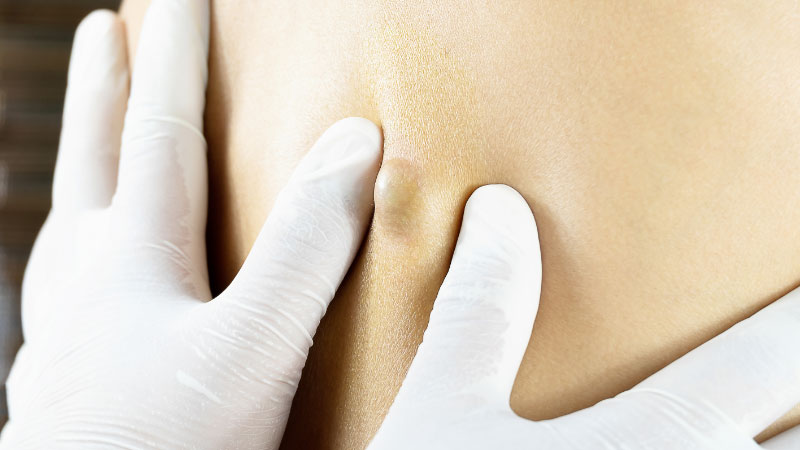Sebaceous cysts, also known as fat cysts, are non-cancerous lumps filled with sebum, appearing on various parts of the body. The standard treatment involves surgical removal, typically through a small incision to extract the cyst.

Lipoma Surgery
Surgery, although a word that might instill fear and prejudice, should not be a concern for cyst removal. Performed by a skilled doctor, the procedure can be completed in as short as 3-4 minutes.
A small incision of about 1cm is made to remove the fatty tissue, followed by closure with a hidden stitch. This method avoids the appearance of “stitch marks,” preventing an unsightly look.
Despite many experts claiming that normal stitches would disappear quickly, this isn’t always the case. The surgery can comfortably be done under local anesthesia without any known risks. Patients can return to their social life or work immediately after the surgery, meaning there’s no significant pain involved.
Where Can Fat Cysts Occur?
- Neck
- Shoulders
- Abdomen
- Calves
- Back
- Scalp (in the form of cysts rather than solid lumps)
- Hips
In essence, they can occur anywhere there is subcutaneous fat tissue, except the scalp. Their frequency on the palms and soles is less compared to other body areas.
Lipomas, classified as benign growths or tumors of fatty tissue, are not cancerous and are rarely harmful. If they do not cause any discomfort, treatment for lipomas is generally not necessary.
What Causes Lipomas?
The exact cause is unknown, but genetic factors may play a role. If your family has a history of lipomas, you’re more likely to develop them. While rare in babies and children, lipomas are common in adults aged 40-60.
Symptoms of Lipomas Include:
- Feeling soft to the touch
- Moving under the skin when pressed
- Being colorless
- Slow growth
- Most commonly appearing on the neck, back, and shoulders, but can also occur on the stomach, thighs, and arms.
How Are Lipomas Diagnosed?
A physical examination by a doctor can usually diagnose a lipoma. If the tissue moves, is soft, and painless when touched, it’s easily identified as a lipoma through both examination and visual inspection.
If pain or discomfort is present upon touch or at any time, a biopsy may be necessary. This involves taking a small sample of the cyst for laboratory testing to rule out cancer. Although lipomas are benign, cancerous fatty tissues can be mistaken for them.
Do Lipomas Cause Pain?
Lipomas cause as much pain as other living tissues, meaning they generally do not cause pain unless they are pressed or injured. They can cause pain when compressed or squeezed, such as in joint areas, sitting areas on the hips, or where belts are worn.
Can Lipomas Become Cancerous?
Lipomas cannot become cancerous. They may grow but do not have the potential to turn into cancer. However, liposarcoma is a different condition that is cancerous from the start. While liposarcoma is malignant, it is not fatal and can be adequately treated with surgery.
Symptoms of Cancerous Fat Cysts:
Irregular and widespread swelling under the skin (unlike the defined shape of lipomas)
Softer than lipomas (which have a capsule making them firmer)
Different ultrasound images, with radiologists able to provide distinguishing opinions
During surgery, cancerous fat cysts are darker in color, lack a capsule, and blend into surrounding tissue without a clear boundary, unlike lipomas, which have a capsule and distinct boundaries.
Cancerous fat cysts disintegrate easily when slightly pressed, whereas lipomas are firmer and do not crumble.
Cancerous fat cysts tend to grow rapidly and are generally larger.

